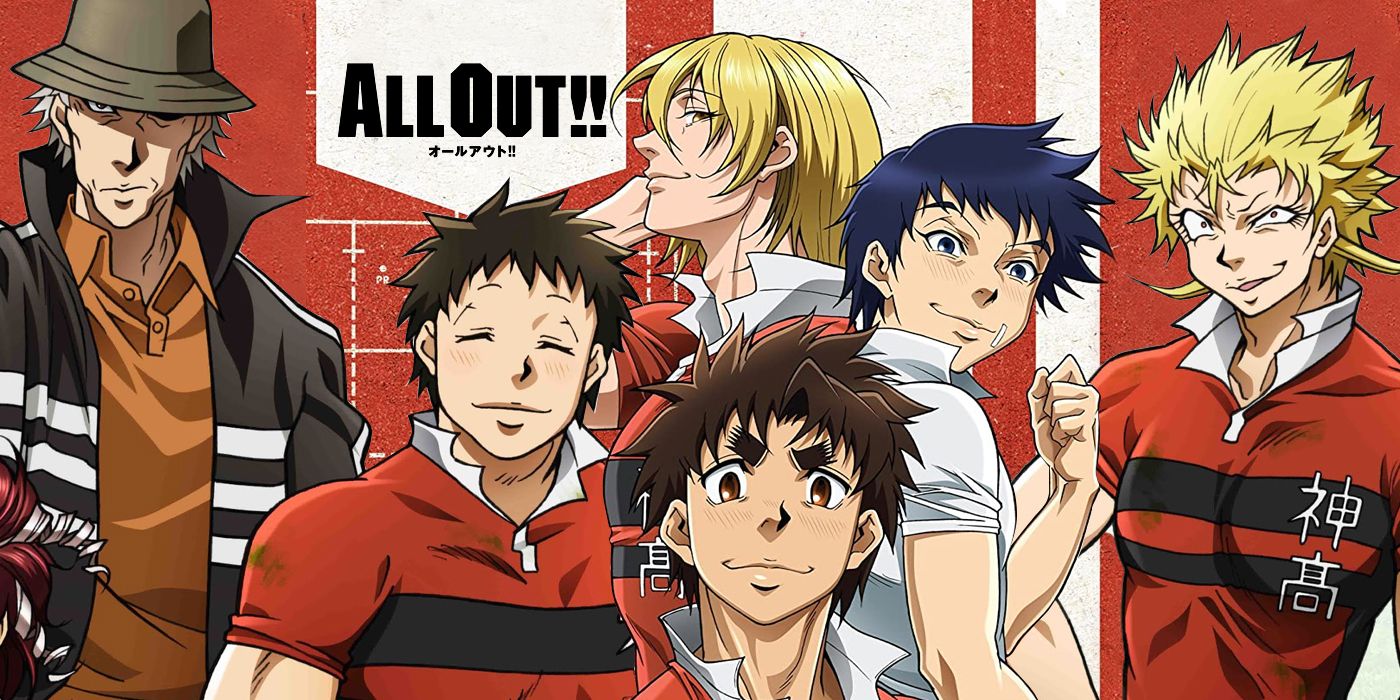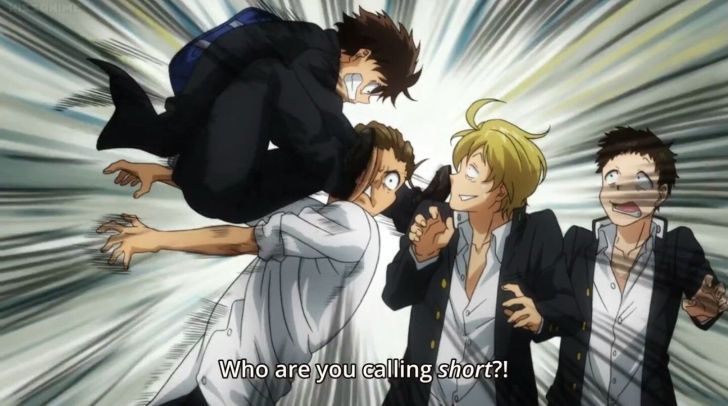Athletes come in a wide variety of shapes and sizes based on the sports and skills they train for. So why do so many sports anime depict teams full of pretty, slender bishounens, as though that’s the default?
That isn’t to say sports anime that fall into that category are automatically bad. Plenty of sports anime do, and at the end of the day, that’s what sells. The success of anime like Free, Haikyuu, and Kuroko no Basket have proven that it works to create a cast of attractive characters for a fan base to latch onto. However, athletes don’t all look like that. Volleyball players often aren’t so lithe, they usually need to be built for power, especially in the legs. Swimmers, particularly for backstroke and butterfly, usually have particularly broad backs and shoulders. These seem like small details, but ultimately, they add to the realism of an anime. They lead to diversity in the designs of characters, and provide opportunities to positively showcase body types outside of the ones usually portrayed in sports anime.
The perfect example of this is All Out.
A 2016 anime centering around a high school rugby team, All Out cuts no corners in their character designs. Rugby players aren’t known for being slight; they’re known for being packed with muscle, built for strength and power. Every character in All Out fits this description, and they all do it in a different way. Some characters are short and stocky, others are tall and broad, some are fat and others thin, but they’re all on the same team, playing the same sport. No one is ever excluded based on their size, which is one of the main points of the anime. Gion Kenji, the central character, joins the team because it’s the first sport that didn’t reject him based on his small stature. In fact, his size even became an advantage when it came to tackling.
This diversity isn’t something performative, either. Fat characters don’t fall into typical stereotypes, such as comedic relief roles or slobbish behavior; they’re given fleshed out personalities, each different from each other. Hirota and Hachioji both are presented as confident in their abilities, but while Hachioji is easygoing, affectionate, and rather popular, Hirota is more aggressive and blunt. They are both considered assets to the team and neither of them are looked down on for their size at any point in the series by their teammates. In fact, Hirota is often praised for his strength and sturdiness, which is highlighted in scenes where he’s in scrum and ruck positions.
It’s also important to note that larger characters’ relationship with food is never questioned. It’s completely normal for the team members to eat a lot and eat often given the amount of physical activity they do. It’s common to see the boys eating together before or after practices, turning meals into positive, team bonding experiences. So often, we hear about the strict diets of professional athletes and how it affects their relationship with food and their bodies. This topic is touched upon in All Out as well, through Keta. Keta ended up quitting the team at his parent’s request after he began losing his appetite and by extension, his energy to keep up with rugby. The choice to have Keta keep his own health in mind is an important one. He isn’t praised for pushing his body to insane limits. He is, however, positively received by the team for quitting, and is told by Sekizan to come watch them play. Keta is never made to feel guilty for his decision. It’s nice to see this in a sports anime. Athletes shouldn’t be forced to work through injuries or mental health issues until they are impossible to repair for results. This is an important part of the body positivity All Out depicts. It focuses on caring for your body not because it’s needed to play a sport, but because it’s what’s healthy. All Out’s portrayal of the relationship between food, health, and athletes is a good one. It makes sure to present eating as essential to the improvement of one’s athleticism and health. Without the calories to burn, a practice is worthless because your body has no fuel to work its hardest.
A core element of All Out is the way the team interacts. They’re having to learn how to work as a unit, figuring out where they fit on the team. At first, it’s a mess. They don’t hate each other, but they’re frustrated. Some players think they can play the field by themselves, others are working through past trauma connected to the sport, and still others have personal issues affecting their performance. As they grow closer, there’s a clear message: you can only do what you’re capable of, and you should do your best at that while other people cover your weak spots. Every single player has a role, a purpose on the team, that’s essential. It doesn’t matter their shape or size; working hard gave them their spot on the team.
Much of what was just explained may seem like typical sports anime plot: learning to work as a team, a main character with some kind of disadvantage, team meals, and so on. The difference with All Out is that it feels real. Unlike Haikyuu’s Hinata Shoyo, Gion doesn’t have any seemingly superhuman abilities that help him in rugby. He just works hard. He spends a lot of time learning the rules and improving his game. This goes for all of the characters in the series. While they have their strengths, the audience is shown shot after shot of them practicing. They run laps, they do drills, and during games, there’s no special finishing move.
Most importantly, the anime never treats Gion’s height as a disadvantage. He’s short, but it’s not a hindrance, and no one ever tells him he’ll be bad at rugby because of it. They don’t treat any physical attribute as a reason to not play rugby. The team is made up of boys of all body types, as most sports teams at the high school level - and beyond - are. The great thing about All Out is that it showcases these different bodies as having strength, purpose, and place within the team. The audience watching has a chance to see themselves not just in the personality of the characters, but their appearance, too. It serves as a reminder that sports should be a place for everyone, as long as they try their best and work hard.
In the sense of body positivity and representation, All Out is leagues above most sports anime. Even other rugby centered anime, like Number 24 and Try Knights, put aside the realistic depiction of rugby players in favor of the aforementioned pretty bishounens. The dedication to presenting a team with diverse body types and personalities without reverting to tokenism or stereotypes is not only commendable, but incredibly realistic. All Out aims not only to tell a story of rugby, but also acceptance. Part of being on a team is meeting people who are different from you, whether it be physically or otherwise, and All Out demonstrates that those differences don’t need to be pointed out. They just need to exist as they are and be treated with the same dignity and respect that’s given to what’s considered the norm.



